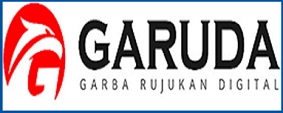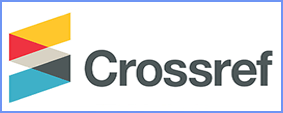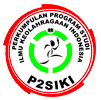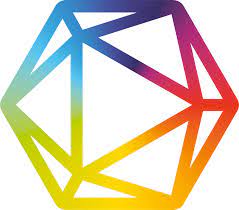Physical Literacy Research Trends In Children In Indonesia: Analysis Using Scopus Database
Abstract
This study aims to provide an overview of the state of physical literacy research in Indonesia and contribute to the global discussion on the development of physical literacy in children. It focuses on: (1) the prevailing themes and focus areas in physical literacy research related to children in Indonesia, (2) how these themes have evolved over time, (3) the dominant methodologies used in these studies, and (4) the gaps and areas identified for future research. The Scopus database was used to select articles containing information on the implementation and impact of physical literacy on children in Indonesia. The search followed the Preferred Reporting Items for Systematic Reviews and Meta-Analyses (PRISMA) guidelines. After applying exclusion criteria, only seven articles qualified for in-depth analysis. A review of the literature reveals that the development of physical literacy in children requires a planned approach involving a learning model that integrates fundamental motor skills. Evaluation instruments for physical literacy are also crucial, yet only a few adapted instruments have been tested. Moreover, there is currently no specific framework for physical literacy in Indonesia, despite its reliance on the ecological context of a region. This review identifies that research on physical literacy in Indonesia, particularly for children, remains very limited. Considering the critical role of early childhood development for later life, frameworks, assessment instruments, learning models, and programs to enhance physical literacy for children in Indonesia are notably scarce. Future research is expected to focus on these areas
Downloads
References
Barnett, L. M., Jerebine, A., Keegan, R., Watson-Mackie, K., Arundell, L., Ridgers, N. D., Salmon, J., & Dudley, D. (2023). Validity, Reliability, and Feasibility of Physical Literacy Assessments Designed for School Children: A Systematic Review. Sports Medicine, 53(10), 1905–1929. https://doi.org/10.1007/s40279-023-01867-4
Barnett, L. M., Mazzoli, E., Bowe, S. J., Lander, N., & Salmon, J. (2022). Reliability and validity of the PL-C Quest, a scale designed to assess children’s self-reported physical literacy. Psychology of Sport and Exercise, 60, 102164.
https://doi.org/10.1016/j.psychsport.2022.102164
Barnett, L. M., Mazzoli, E., Hawkins, M., Lander, N., Lubans, D. R., Caldwell, S., Comis, P., Keegan, R. J., Cairney, J., Dudley, D., Stewart, R. L., Long, G., Schranz, N., Brown, T. D., & Salmon, J. (2022). Development of a self-report scale to assess children’s perceived physical literacy. Physical Education and Sport Pedagogy, 27(1), 91–116. https://doi.org/10.1080/17408989.2020.1849596.
Barratt, J., Dudley, D., Stylianou, M., & Cairney, J. (2024). A conceptual model of an effective early childhood physical literacy pedagogue. Journal of Early Childhood Research, 1476718X231219580. https://doi.org/10.1177/1476718X231219580
Belton, S., Issartel, J., McGrane, B., Powell, D., & O’Brien, W. (2019). A consideration for physical literacy in Irish youth, and implications for physical education in a changing landscape. Irish Educational Studies, 38(2), 193–211. https://doi.org/10.1080/03323315.2018.1552604
Cairney, J., Clark, H. J., James, M. E., Mitchell, D., Dudley, D. A., & Kriellaars, D. (2018). The Preschool Physical Literacy Assessment Tool: Testing a New Physical Literacy Tool for the Early Years. Frontiers in Pediatrics, 6, 138. https://doi.org/10.3389/fped.2018.00138
Cairney, J., Dudley, D., Kwan, M., Bulten, R., & Kriellaars, D. (2019a). Physical Literacy, Physical Activity and Health: Toward an Evidence-Informed Conceptual Model. Sports Medicine, 49(3), 371–383. https://doi.org/10.1007/s40279-019-01063-3
Cairney, J., Dudley, D., Kwan, M., Bulten, R., & Kriellaars, D. (2019b). Physical Literacy, Physical Activity and Health: Toward an Evidence-Informed Conceptual Model. Sports Medicine, 49(3), 371–383. https://doi.org/10.1007/s40279-019-01063-3
Cairney, J., Kiez, T., Roetert, E. P., & Kriellaars, D. (2019). A 20th-Century Narrative on the Origins of the Physical Literacy Construct. Journal of Teaching in Physical Education, 38(2), 79–83. https://doi.org/10.1123/jtpe.2018-0072
Carl, J., Barratt, J., Arbour-Nicitopoulos, K. P., Barnett, L. M., Dudley, D. A., Holler, P., Keegan, R., Kwan, M., Scurati, R., Sum, R. K.-W., Wainwright, N., & Cairney, J. (2023). Development, explanation, and presentation of the Physical Literacy Interventions Reporting Template (PLIRT). International Journal of Behavioral Nutrition and Physical Activity, 20(1), 21. https://doi.org/10.1186/s12966-023-01423-3
De Silva, C., Hawkins, M., Mazzoli, E., Essiet, I. A., & Barnett, L. M. (2023). First-nation Australian children’s interpretation of a pictorial questionnaire designed to assess physical literacy. Physical Education and Sport Pedagogy, 1–15. https://doi.org/10.1080/17408989.2023.2284925
Diao, Y., Wang, L., Chen, S., Barnett, L. M., Mazzoli, E., Essiet, I. A., Wang, X., Wang, L., Zhao, Y., Li, X., & Li, J. (2024). The validity of the Physical Literacy in Children Questionnaire in children aged 4 to 12. BMC Public Health, 24(1), 869. https://doi.org/10.1186/s12889-024-18343-x
Dudley, D., Cairney, J., Wainwright, N., Kriellaars, D., & Mitchell, D. (2017). Critical Considerations for Physical Literacy Policy in Public Health, Recreation, Sport, and Education Agencies. Quest, 69(4), 436–452.
https://doi.org/10.1080/00336297.2016.1268967
Edwards, L. C., Bryant, A. S., Keegan, R. J., Morgan, K., Cooper, S.-M., & Jones, A. M. (2018). ‘Measuring’ Physical Literacy and Related Constructs: A Systematic Review of Empirical Findings. Sports Medicine, 48(3), 659–682. https://doi.org/10.1007/s40279-017-0817-9
Edwards, L. C., Bryant, A. S., Keegan, R. J., Morgan, K., & Jones, A. M. (2017). Definitions, Foundations and Associations of Physical Literacy: A Systematic Review. Sports Medicine, 47(1), 113–126. https://doi.org/10.1007/s40279-016-0560-7
Friskawati, G. F., Ma’mun, A., & Mahendra, A. (2023). A Consideration of Physical Literacy for Sports Policy in Indonesia. Asian Journal of Sport History & Culture, 2(3), 335–349. https://doi.org/10.1080/27690148.2023.2265345
Friskawati, G. F., & Stephani, M. R. (2021). Analysis Research Trends of Physical Literacy in Indonesia. Jurnal Pendidikan Jasmani Dan Olahraga, 6(2). https://doi.org/10.17509/jpjo.v6i2.38298
Giblin, S., Collins, D., & Button, C. (2014). Physical Literacy: Importance, Assessment and Future Directions. Sports Medicine, 44(9), 1177–1184. https://doi.org/10.1007/s40279-014-0205-7
Goss, H. R., Shearer, C., Knowles, Z. R., Boddy, L. M., Durden-Myers, E. J., & Foweather, L. (2022). Stakeholder perceptions of physical literacy assessment in primary school children. Physical Education and Sport Pedagogy, 27(5), 515–530. https://doi.org/10.1080/17408989.2021.1911979
Gustian, U. (2020). Permainan tradisional: Suatu pendekatan dalam mengembangkan physical literacy siswa sekolah dasar. Jurnal SPORTIF : Jurnal Penelitian Pembelajaran, 6(1), 199–215. https://doi.org/10.29407/js_unpgri.v6i1.14252
Hidayat, C., Lengkana, A. S., Fauzi, R. A., Rohyana, A., Rosalina, M., Hermawan, D. B., & Purwanto, D. (2022). Levelling System Model: Approach to Physical Literacy. International Journal of Learning, Teaching and Educational Research, 21(11), Article 11. https://www.ijlter.org/index.php/ijlter/article/view/6352
Irmansyah, J., Susanto, E., Lumintuarso, R., Sugiyanto, Fx., Syarif, A., & Hermansyah, H. (2021). Physical Literacy in the Culture of Physical Education in Elementary Schools: Indonesian Perspectives. International Journal of Human Movement and Sports Sciences, 9(5), 929–939. https://doi.org/10.13189/saj.2021.090514
Keegan, R. J., Barnett, L. M., Dudley, D. A., Telford, R. D., Lubans, D. R., Bryant, A. S., Roberts, W. M., Morgan, P. J., Schranz, N. K., Weissensteiner, J. R., Vella, S. A., Salmon, J., Ziviani, J., Okely, A. D., Wainwright, N., & Evans, J. R. (2019). Defining Physical Literacy for Application in Australia: A Modified Delphi Method. Journal of Teaching in Physical Education, 38(2), 105–118. https://doi.org/10.1123/jtpe.2018-0264
Li, Y., Pan, A., Wang, D. D., Liu, X., Dhana, K., Franco, O. H., Kaptoge, S., Di Angelantonio, E., Stampfer, M., Willett, W. C., & Hu, F. B. (2018). Impact of Healthy Lifestyle Factors on Life Expectancies in the US Population. Circulation, 138(4), 345–355. https://doi.org/10.1161/CIRCULATIONAHA.117.032047
Librianty, H. D., & Yufiarti, E. Y. (2021, August 2). Teacher involvement in active play and its effect on children’s physical literacy. | Journal of Physical Education & Sport | EBSCOhost. https://doi.org/10.7752/jpes.2021.s4298
Longmuir, P. E., & Tremblay, M. S. (2016). Top 10 Research Questions Related to Physical Literacy. Research Quarterly for Exercise and Sport, 87(1), 28–35. https://doi.org/10.1080/02701367.2016.1124671
Mandigo, J., Lodewyk, K., & Tredway, J. (2019). Examining the Impact of a Teaching Games for Understanding Approach on the Development of Physical Literacy Using the Passport for Life Assessment Tool. Journal of Teaching in Physical Education, 38(2), 136–145. https://doi.org/10.1123/jtpe.2018-0028
Martins, J., Onofre, M., Mota, J., Murphy, C., Repond, R.-M., Vost, H., Cremosini, B., Svrdlim, A., Markovic, M., & Dudley, D. (2021). International approaches to the definition, philosophical tenets, and core elements of physical literacy: A scoping review. PROSPECTS, 50(1), 13–30. https://doi.org/10.1007/s11125-020-09466-1
Mohamed Shaffril, H. A., Samah, A. A., Samsuddin, S. F., & Ali, Z. (2019). Mirror-mirror on the wall, what climate change adaptation strategies are practiced by the Asian’s fishermen of all? Journal of Cleaner Production, 232, 104–117. https://doi.org/10.1016/j.jclepro.2019.05.262
Mohammadi, M., Elahipanah, F., & Amani-shalamzari, S. (2023). The role of the cultural environment in the development of physical literacy and physical activity of Iranian children. BMC Pediatrics, 23(1), 477. https://doi.org/10.1186/s12887-023-04297-3
Moher, D., Liberati, A., Tetzlaff, J., Altman, D. G., & PRISMA Group. (2009). Preferred reporting items for systematic reviews and meta-analyses: The PRISMA statement. Journal of Clinical Epidemiology, 62(10), 1006–1012. https://doi.org/10.1016/j.jclinepi.2009.06.005
Pambudi, A. F., Sugiyanto, S., Hidayatullah, F., & Purnama, S. K. (2021). Physical Activity Model to Develop Basic Movement Skills in Kindergarten Students Based on Physical Literacy. Physical Education Theory and Methodology, 21(4), 323–329. https://doi.org/10.17309/tmfv.2021.4.06
Permana, R., Winarno, M. E., Rahayu, S., & Hadi, H. (2023). Validity and Reliability Assessment Physical Literacy- Physical Competence Domain (APL-PCD) in East Priangan, Indonesia. International Journal of Human Movement and Sports Sciences, 11(6), 1219–1226. https://doi.org/10.13189/saj.2023.110605
Priadana, B. W., Maksum, A., & Suroto, S. (2023). Impact of Parental Background on Children’s Physical Literacy: A Structural Equation Modeling Analysis. International Journal of Human Movement and Sports Sciences, 11(5), 1132–1139. https://doi.org/10.13189/saj.2023.110522
Rihatno, T. 1, & Nuraini, S. 1 1 D. of P. E. (2021). Children’s physical literacy development needs using mobile learning. 2395–2401. https://doi.org/10.7752/jpes.2021.s4321
Robinson, D. B., & Randall, L. (2017). Marking Physical Literacy or Missing the Mark on Physical Literacy? A Conceptual Critique of Canada’s Physical Literacy Assessment Instruments. Measurement in Physical Education and Exercise Science, 21(1), 40–55. https://doi.org/10.1080/1091367X.2016.1249793
Samsuddin, S. F., Shaffril, H. A. M., & Fauzi, A. (2020). Heigh-ho, heigh-ho, to the rural libraries we go! - A systematic literature review. Library & Information Science Research, 42(1), 100997. https://doi.org/10.1016/j.lisr.2019.100997
Suherman, A., Suherman, A., Juliantine, T., & Mahendra, A. (2021). Thematic Learning Based On Physical Literacy for Early Children. JUARA : Jurnal Olahraga, 6(2), 318–331. https://doi.org/10.33222/juara.v6i2.1347
Suntoda, A., Anira, A., Nugroho, W. A., & Wibowo, R. (2021). Physical Literacy Assessment of Elementary School Children in Indonesian Urban Areas. TEGAR: Journal of Teaching Physical Education in Elementary School, 5(1), 76–83. https://doi.org/10.17509/tegar.v5i1.41072
Tremblay, M. S., Costas-Bradstreet, C., Barnes, J. D., Bartlett, B., Dampier, D., Lalonde, C., Leidl, R., Longmuir, P., McKee, M., Patton, R., Way, R., & Yessis, J. (2018). Canada’s Physical Literacy Consensus Statement: Process and outcome. BMC Public Health, 18(2), 1034. https://doi.org/10.1186/s12889-018-5903-x
Warburton, D. E. R., & Bredin, S. S. D. (2017). Health benefits of physical activity: A systematic review of current systematic reviews. Current Opinion in Cardiology, 32(5), 541–556. https://doi.org/10.1097/HCO.0000000000000437
Warner, M., Robinson, J., Heal, B., Lloyd, J., Mandigo, J., Lennox, B., & Davenport Huyer, L. (2021). Increasing physical literacy in youth: A two-week Sport for Development program for children aged 6-10. PROSPECTS, 50(1–2), 165–182. https://doi.org/10.1007/s11125-020-09519-5
Young, L., O’Connor, J., Alfrey, L., & Penney, D. (2021). Assessing physical literacy in health and physical education. Curriculum Studies in Health and Physical Education, 12(2), 156–179. https://doi.org/10.1080/25742981.2020.1810582
Copyright (c) 2025 Achmad Syakur Fahri, Lukmannul Haqim Lubay

This work is licensed under a Creative Commons Attribution-ShareAlike 4.0 International License.









